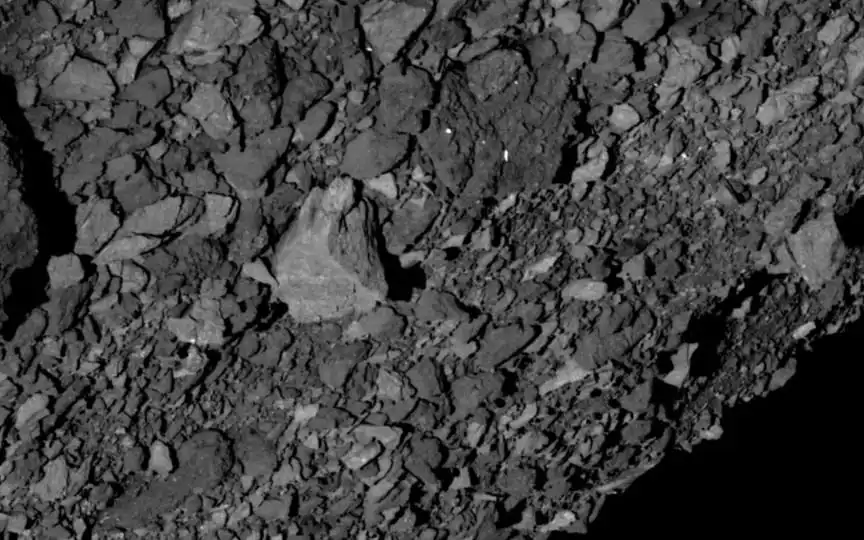NASA Uncovers Evidence of Life-Forming Molecules in Bennu Asteroid Sample
NASA has been actively monitoring and researching asteroids to gain a better understanding of their close encounters with Earth and the potential risks they pose. Utilizing advanced instruments, NASA has determined that a Potentially Hazardous Asteroid (PHA) named Bennu has a 1 in 2700 chance of colliding with Earth between 2175 and 2195. To further investigate this celestial body, NASA launched the Origins, Spectral Interpretation, Resource Identification, and Security-Regolith Explorer (OSIRIS-REx) on September 8, 2016. The mission involved traveling to Bennu, landing on its surface, collecting samples of dust and rocks, and safely returning them to Earth. Recently, the OSIRIS-REx spacecraft completed its mission by releasing the sample container over Earth, which underwent a “nitrogen purge” before being transported to NASA’s Johnson Space Center in Houston.
The Space Agency opened the sample container in a live event yesterday, and the resulting rock tests have revealed shocking results!
Bennu Asteroid sample
NASA revealed in its press release that during the preliminary evaluation by the OSIRIS-REx mission science team, the samples collected from the surface of the Bennu asteroid have a high carbon content and water! Both demonstrate the existence of the building blocks of life!
NASA Administrator Bill Nelson said: “The OSIRIS-REx sample is the largest carbon-rich asteroid sample ever delivered to Earth, and will help scientists study the origins of life on our own planet for generations to come.”
This discovery was made during preliminary tests, and the scientific team is now conducting further studies on the carbon compound found in the asteroid sample. It was scanned with an electron microscope, infrared measurements, X-ray diffraction and chemical elemental analysis. NASA said the sample will be studied for decades to come and could hold the key to unlocking the mysteries of how the solar system formed, how life originated on Earth and how to avoid asteroid collisions.
“NASA missions like OSIRIS-REx improve our understanding of asteroids that could threaten Earth and give us a glimpse of what’s beyond. The sample has made it back to Earth, but there’s still so much science to be learned — science that we don’t have never seen before,” Nelson added.
Additional sample collected
NASA revealed that their intention was to collect 60 grams of asteroid samples. However, when the lid of the capsule was opened, so much excess material was found that it slowed down the preservation of the primary sample in the clean room.
Vanessa Wyche, director of the NASA Johnson Space Center, said: “We’ve had scientists and engineers working side by side for years to develop special glove boxes and tools to keep the asteroid material intact and curate the samples so that scientists now and decades from now can study this precious gift from the cosmos. “




